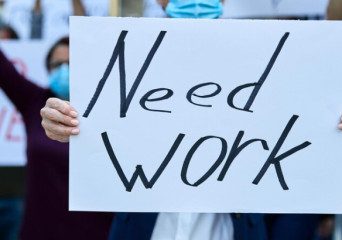
Table Of Contents
- What Is Organizational Effectiveness?
- The Quest for Excellence:
- The Efficiency-Effectiveness Dance:
- The Four Pillars of Organizational Effectiveness:
- Strategic Planning:
- Structure and Processes:
- People and Culture:
- Measuring and Adapting:
- Striking a Balance:
- The Leadership Connection:
- The Numbers Game:
- Culture Is Key:
- Embracing Change:
- Learning from Success Stories:
- Continuous Improvement:
- How To Measure Organizational Effectiveness?
- The Quest for Clarity: Setting Clear Goals
- Metrics That Matter: Key Performance Indicators (KPIs)
- Data, Data, Data: Collecting the Right Information
- Benchmarking: Comparing Against the Best
- Surveys and Feedback: The Voice of Stakeholders
- Data Visualization: Making the Complex Clear
- Setting Targets and Milestones: What Success Looks Like
- Regular Assessment and Course Correction:
- A Holistic Approach: People, Processes, and Culture
- How To Achieve Organizational Effectiveness?
- Start with a Clear Mission and Vision:
- Strategic Planning: The Roadmap to Success:
- Streamline Structure and Processes:
- Invest in Your People:
- Measurement and Metrics: Keep Score:
- Flexibility and Adaptability: Embrace Change:
- Leadership and Culture: Set the Tone:
- Employee Involvement: Everyone's on the Journey:
- Training and Development: Sharpen the Skills:
- Benchmark and Learn from the Best:
- Communication and Feedback: Stay Connected:
- Continuous Improvement: Keep Moving Forward:
- Final Thoughts
Everything You Need To Know About Organizational Effectiveness
Organizational effectiveness – it’s a term that gets tossed around boardrooms, HR departments, and management meetings, but what does it really mean, and why does it matter? Let’s break it down and explore this critical aspect of business success.
What Is Organizational Effectiveness?
Ever wondered what makes some organizations thrive while others merely survive or, worse, fail? The answer often lies in something called “organizational effectiveness.” But what does that even mean? Let’s peel back the layers and demystify this vital concept.
The Quest for Excellence:
Organizational effectiveness is all about being excellent at what you do. It’s the gold standard for how well a company operates, thrives, and fulfills its mission. Imagine it as a compass guiding your organization toward its goals.
The Efficiency-Effectiveness Dance:
Efficiency and effectiveness are like a dynamic duo in the world of organizations. They’re often used interchangeably, but they’re not quite the same. Efficiency is about doing things with as few resources as possible. Effectiveness is about doing the right things to achieve your goals. Organizational effectiveness seeks to find that sweet spot where both meet.
The Four Pillars of Organizational Effectiveness:
To understand how effective an organization is, we often look at these four essential pillars:
Strategic Planning:
It all starts here. Set clear goals, devise a strategy, and create a roadmap to success.
Structure and Processes:
How is your organization designed, and are your processes streamlined for efficiency and productivity?
People and Culture:
The heartbeat of any organization. Employee engagement, culture, and teamwork are the soul of an effective organization.
Measuring and Adapting:
Collect data, analyze results, and adjust your strategies and processes based on what you learn.
Striking a Balance:
Effective organizations know how to balance short-term goals with long-term sustainability. It’s not just about the quick win; it’s about ensuring the company’s ongoing growth and success.
The Leadership Connection:
Leadership plays a pivotal role in this journey. Leaders set the tone, communicate the vision, and establish a culture of continuous improvement. Effective leadership propels the entire organization forward.
The Numbers Game:
Metrics and key performance indicators (KPIs) are the yardsticks of success. They help you measure progress, make informed decisions, and identify areas in need of improvement.
Culture Is Key:
A positive, adaptable, and inclusive organizational culture is a powerful driver of effectiveness. It fosters collaboration, innovation, and employee retention.
Embracing Change:
Change is the only constant in today’s business world. Effective organizations don’t fear change; they embrace it. They adapt swiftly and efficiently to new challenges and opportunities.
Learning from Success Stories:
Looking at companies that have achieved organizational excellence can be instructive. Case studies provide valuable insights into the strategies and practices that work in the real world.
Continuous Improvement:
Organizational effectiveness is not a one-time fix; it’s an ongoing process. Regularly review your strategies, structures, and processes to ensure you’re on the right track.
In essence, organizational effectiveness is the secret sauce that helps organizations flourish. It’s about working smarter, not just harder, and being adaptable in a constantly changing business landscape. By focusing on strategy, structure, people, and adaptability, organizations can unlock their full potential and ensure long-term success. So, dive in, assess, adapt, and watch your organization thrive!
How To Measure Organizational Effectiveness?
Measuring organizational effectiveness is like keeping score in a game. You want to know if you’re winning, right? But how do you keep score in the complex world of organizations? That’s where we dive into the art and science of measuring success.
The Quest for Clarity: Setting Clear Goals
Imagine a cross-country road trip without a map or a destination. You’d end up driving in circles. The first step in measuring organizational effectiveness is setting clear, well-defined goals. Know where you’re headed and what success looks like.
Metrics That Matter: Key Performance Indicators (KPIs)
KPIs are your best friends in this journey. These are the metrics that matter most – revenue, customer satisfaction, employee turnover, and many others. Identify the KPIs that align with your goals and use them to keep tabs on progress.
Data, Data, Data: Collecting the Right Information
You can’t measure without data. Collect and analyze data related to your KPIs. It’s like taking regular readings of vital signs for your organization. It might include financial reports, customer feedback, employee surveys, or market research.
Balancing the Big Picture and the Nitty-Gritty:
Your KPIs can be categorized into two types: outcome metrics and process metrics. Outcome metrics tell you if you’re achieving your goals (e.g., profit margins), while process metrics give insights into how you’re doing it (e.g., production efficiency). Both are essential.
Benchmarking: Comparing Against the Best
Benchmarking is like comparing your performance to the star players in your league. It helps you understand where you stand in your industry or sector. This can be a powerful tool for identifying areas that need improvement.
Surveys and Feedback: The Voice of Stakeholders
Don’t forget to listen to the people who matter. Collect feedback from customers, employees, and other stakeholders. Their input can provide invaluable insights into areas that might need attention.
Data Visualization: Making the Complex Clear
Numbers can be overwhelming, but data visualization tools can turn them into meaningful insights. Charts, graphs, and dashboards make it easier to spot trends, anomalies, and areas for improvement.
Setting Targets and Milestones: What Success Looks Like
Once you have data, use it to set targets and milestones. Think of them as the mini-goals along your journey. They give you something specific to aim for, and they let you know when you’ve achieved it.
Regular Assessment and Course Correction:
Measuring organizational effectiveness isn’t a one-time thing. It’s an ongoing process. Regularly review your data, assess progress, and be prepared to make changes when necessary.
A Holistic Approach: People, Processes, and Culture
Remember, organizational effectiveness is more than just numbers. It’s about people, processes, and culture. It’s about how well your organization works as a whole, not just the sum of its parts.
How To Achieve Organizational Effectiveness?
Organizational effectiveness – it sounds impressive, right? But how do you actually get there? It’s like setting off on an adventure; you need a map, the right gear, and a clear sense of direction. Let’s break down the journey to organizational effectiveness into manageable steps.
Start with a Clear Mission and Vision:
Every journey begins with a destination in mind. Define your organization’s mission and vision. What’s your purpose, and where do you see yourself in the future? This sets the direction for everything that follows.
Strategic Planning: The Roadmap to Success:
Once you know where you’re headed, create a strategic plan. It’s like plotting your route on a map. Set clear, achievable goals and lay out the steps to reach them.
Streamline Structure and Processes:
Your organization is like a well-oiled machine, and you want it to run smoothly. Take a close look at your structure and processes. Are they efficient and effective, or do they need some oiling and fine-tuning?
Invest in Your People:
Your team is your most valuable asset. Nurture a culture of continuous learning, growth, and collaboration. Engaged and motivated employees are your engine for success.
Measurement and Metrics: Keep Score:
You can’t improve what you don’t measure. Identify key performance indicators (KPIs) and track them. These metrics are like your compass, showing you where you are and if you’re on the right track.
Flexibility and Adaptability: Embrace Change:
In the ever-changing landscape of business, adaptability is key. Be prepared to pivot when necessary. Like a good hiker, you’ll need to adjust your route based on the terrain.
Leadership and Culture: Set the Tone:
Leadership sets the tone for the entire organization. Lead by example and foster a culture of openness, innovation, and accountability. Your team will follow your lead.
Employee Involvement: Everyone’s on the Journey:
Involving employees in decision-making can be a game-changer. They’re on the front lines and often have valuable insights to share. Engage them in the process and make them part of the solution.
Training and Development: Sharpen the Skills:
Invest in the professional development of your team. Like preparing for a long hike, they need the right tools and skills to tackle challenges and reach new heights.
Benchmark and Learn from the Best:
Look at industry leaders and successful organizations. Benchmark your performance against theirs and learn from their strategies and practices.
Communication and Feedback: Stay Connected:
Communication is the thread that ties everything together. Foster open channels for feedback and dialogue. It’s like having a reliable GPS to keep you on the right path.
Continuous Improvement: Keep Moving Forward:
Organizational effectiveness is an ongoing journey. Regularly review your progress, learn from your experiences, and make continuous improvements. It’s like getting better and better at navigating the trail.
Final Thoughts
In a nutshell, organizational effectiveness is the secret sauce that helps companies thrive. It’s about working smarter, not just harder, and adapting to a constantly changing business landscape. By focusing on strategy, structure, people, and adaptability, you can unlock the full potential of your organization and achieve long-term success. So, dive in, assess, adapt, and watch your organization flourish!
Read Also:









